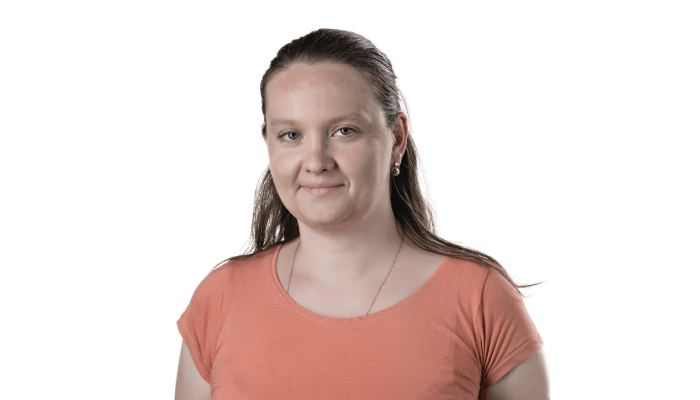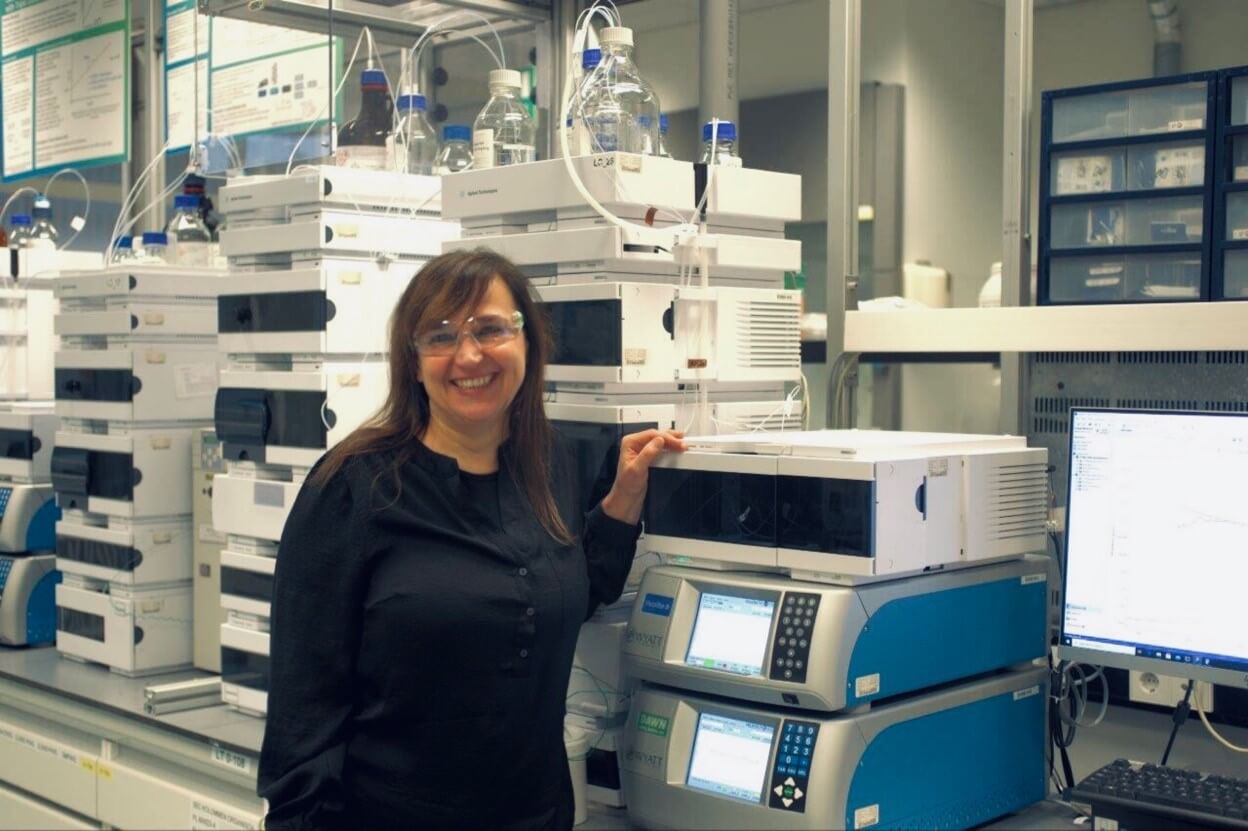“All publicity is good publicity,” so the saying goes – but those in the polymer industry may disagree. With sustainable development and climate change finally being given the global attention it deserves, plastics have become just one of the many perceived evils ravaging our planet. With so much negative attention focused on single-use plastics and plastic microparticles, it’s easy to forget the positive contributions this industry has made to a range of industries – and our lives.
We spoke to Harry Philipsen, Elena Uliyanchenko, Jindra Purmová, and David Meunier – all polymer experts in their own right – to find out more about the analytical science behind the industry and to ask the immortalized question: is there a great future in plastics?
Harry Philipsen – Harry initially obtained his PhD at the Technical University of Eindhoven (TU/e) in 1998, on the thesis “Mechanisms of Gradient Polymer Elution Chromatography and its Applications to (co)Polyesters.” From 1987 to 2007 he worked at Océ Technologies, Venlo, as an analytical chemist and group leader specializing in LC and MS and as an analytical researcher exploring chemicals, mechanisms and their interactions and functioning in printer systems. In 2007, he started at DSM Resolve as business development manager, and was active in projects on breath analysis with the Maastricht University Medical Center (MUMC). He was also co-founder and chairman of United Brains Limburg (UBL), connecting SMEs to knowledge centers in the province of Limburg, the Netherlands. In 2016, as Program Manager and Project Director, he became scientifically responsible for molecular characterization (quantification and molecular structures) of synthetic polymers within DSM.

Elena Uliyanchenko – Elena has an extensive background in polymer and petrochemical characterization. Her PhD, obtained at the University of Amsterdam, focused on the application of ultrahigh-pressure LC and two-dimensional LC to the analysis of polymers. She later went on to work as a Lead Scientist at SABIC in the Netherlands for over seven years, where she led a global team of chromatography experts working on applying analytical techniques to the analysis of thermoplastics. She recently joined Cargill where her field of interest has extended to the food industry and spectroscopy.

Jindra Purmová – Jindra holds a PhD in macromolecular chemistry and is currently team leader for separation, characterization & quantification (SCQ) at the Expert Capability Group - Measurement & Analytical Science (ECG-MAS) of Nouryon. Nouryon was formed in 2018 by splitting off the speciality chemicals division of Akzonobel, with the ambition being to transition from an ingredient supplier to solution provider. The company is not a plastics manufacturer in the traditional sense, but supplies chemicals essential for the manufacture of plastics as well as additives for improvement of mechanical and physicochemical properties. Working in the central analytical laboratory of Nouryon, located in Deventer, The Netherlands, Jindra supports the product and process development activities of all business units forming Nouryon.

David Meunier – David is currently a Fellow in Dow’s Core R&D Analytical Science group. He joined Dow after receiving a BS in Chemistry from North Central College, Naperville, Illinois and a PhD in Analytical Chemistry from the University of Illinois at Urbana-Champaign. David is a global technology leader in the area of macromolecular characterization with expertise in size-exclusion chromatography, molecular topology fractionation, liquid adsorption chromatography, two-dimensional LC, multi-angle light scattering, differential viscometry and spectroscopic detection methods. His interests lie in advancement of these capabilities for elucidation of structural heterogeneity in synthetic polymers through resolution of co-existing distributions in molar mass, long chain branching, chemical composition, grafting and functionality, and establishing process-structure-property relationships.

Harry: In general, it’s clear that the polymer industry is still growing – and that it will continue growing. At DSM, we are moving more and more into high-end applications – like our increased offering of high-value, specialty, high-performing polymer specialties; bio-based and circular solutions for an increased range of our portfolio – with an improved carbon footprint; and safer solutions that are free from hazardous substances. Key industry players like DSM are also focusing their activities. AKZO-Nobel chose a focus on paint and coatings, and DSM is doing that now by choosing to focus towards Nutrition, Health and sustainable living.
Elena: My impression is that the polymer industry is currently rediscovering itself. Polymers are viewed by many as the “enemy of the environment,” so there is mounting pressure for the industry to change. Meanwhile, there’s recently been a shift in focus within polymer applications because of their potential to help in the COVID-19 crisis. All in all, this has meant the emphasis has moved from single-use products to more durable high-end applications (for example, in the medical sector).
Jindra: Specific to our focus at Nouryon, we’ve now entered the growth phase and want to target four attractive end markets: agriculture, buildings and infrastructure, cleaning goods and personal care. The focus on end-markets and customers, which is reflected across the industry, requires a targeted and specific approach and of course leaves less space for exploring new techniques and fundamental analytical research. But certainly, another crucial goal is delivering innovative and sustainable solutions that answer society’s needs.
Harry: It’s getting increasingly competitive, of course. So there’s a need to go faster and cheaper to remain competitive, but, at the same time, things are becoming increasingly complex. There is also a pressure from wider society to make everything more sustainable, and eco-friendly with lower carbon footprints. For those businesses that want to stay in business, it’s imperative they move in this direction – for example, by using bio-based materials or recycled feedstock.
Elena: Generally speaking, societal needs are growing and becoming more demanding – think of flexible displays, materials that can withstand long distance space travel, body parts… At the same time, as I briefly mentioned, there is mounting pressure for environmental reform within the industry. Though it is obvious that the amount of single-use products should be better controlled, it may be less obvious to the public that there is much more to polymers than plastic bags and straws. Plastics made a number of impressive feats possible: digitalization, space travel, improved quality of life for patients, solutions for sustainable housing and food production, and so on.
The plastics industry is now forced to look for “greener” alternatives, but environmentally friendly solutions are often only feasible at the expense of deteriorated properties and increased costs for us as consumers. Substantial research will be needed to create environmentally friendly plastics that are equal in properties and cost to petrochemically-derived alternatives.
Jindra: As Elena has mentioned, finding sustainable alternatives is a key demand placed on our industry at the moment. Nouryon’s very motto, “Your partner in essential chemistry for a sustainable future,” reflects just how key this is to the company – and analytical chemistry is crucial in this journey towards sustainability. We increasingly characterize bio-based raw materials that are often much more complex and contain other types of impurities than their synthetic equivalents. We also provide analytical methods to enable the development of sustainable production processes and are closely involved in the assessment of the environmental impact of new products in an early stage of product development.
David: In my opinion, the polymer industry must be laser-focused on delivering sustainable solutions to the many global challenges the world faces at present. My experience to date suggests that, in most instances, new sustainable materials solutions must match or exceed the performance of existing materials in the marketplace, and, because of this, delivery of these solutions will require a solid materials science understanding of structure-property relationships. As an analytical scientist who partners closely with product development experts, it is clear to me that gaining this structure-property understanding falls squarely on the shoulders of R&D laboratories, and this is not possible without the detailed structural characterization of materials provided by the analytical laboratory. As a result, I feel that R&D laboratories will be impacted by the drive for sustainable materials in a substantial, but positive manner.
Harry: DSM already has many nice examples of products meeting those demands. For example, polyamides with a relatively more favorable carbon footprint than the market standard, bio-based building blocks being used in a growing number of our engineering materials grades, and new food contact grades of materials with extremely low levels of leachables.
Elena: Many companies are looking to renewable sources for the manufacturing building blocks for polymers. This approach produces the same polymer structures as the oil-based route, so the polymer properties are not jeopardized. However, this does not address the major issue: the poor recyclability of plastics. The industry needs fresh out-of-the-box solutions; for example, fundamentally new (maybe hybrid) materials, more durable polymers to create less waste, novel recycling approaches, new feedstocks that can be transferred into polymers....
Some promising efforts in terms of environmentally friendly plastics include PEF biobased plastic developed by Avantium as an alternative for PET (common in plastic bottles) and the generation of feedstocks for polymer production from mixed plastics waste introduced by SABIC. I believe that the latter example is a great step towards “greener” polymers and sustainability because it addresses simultaneously two huge environmental concerns: plastic waste that can’t be recycled and limited natural oil resources.
Jindra: Using efficient production processes, producing low waste streams that contain no toxic compounds, using renewable raw materials, or offering biodegradable products – these cannot be optional in the modern world. Some examples of the latter in Nouryon’s portfolio are modified biopolymers that are used to improve viscosity and other rheological properties in the construction or paint sector. Their high content of biodegradable constituents also decreases the environmental impact when used in mining. Modified biopolymers can also have widespread use in food or pharma products where they add desired properties but do not alter the flavor, nutritional value, or performance of the active ingredient.
David: There are numerous factors driving our industry towards sustainable and safer materials. Global challenges like food, climate, energy, waste and fresh water, are significant drivers for change. If I consider one example – food – it is well known that proper packaging can greatly reduce food waste. However, it is somewhat less known that designing the packaging with recycling in mind can help create a circular economy – as we’ve done by partnering with food banks. With proper packaging, more food can be preserved for longer periods of time and hence distributed to more hungry people. In these partnerships, any food that spoils before it can be distributed is composted, and the compost is provided to farmers in bags made from the recycled food packaging. Additionally, there are numerous opportunities to design new materials to enable the use of recycled materials that simultaneously improve the performance of existing materials and reduce the energy intensity of the manufacturing process. To provide one example, Dow recently launched a new silicone-polyethylene hybrid material (AMPLIFY™Si Silicone Enhanced Polymer System) that improves performance in plastics composites and helps divert plastic waste from landfills. Additionally, the product improves processability, thus easing energy costs and lowering the carbon footprint of the manufacturing process.
Harry: We are now called the Applied Science Center, and we provide the scientific basis for product and application development. So, if for example you are working with fuel tanks and need to determine the permeability of fuels through polymer based layers, we can investigate the material characteristics and provide answers to those questions. But we get involved in all sorts of projects, for example, optimizing plant efficiency or exploring how bio-based materials will impact the properties of a product. Analytical science is key at pretty much every step because you always need to be able to understand how the materials are functioning at a fundamental level. We may employ techniques such as X-ray scattering or solid state NMR to study the morphology and mobility of various phases in a material or perhaps use hyphenated separations to understand the fine chemical microstructures.
Jindra: The central analytical laboratory of Nouryon, where I work, supports the R&D product and process development activities of all our business units. Relatively recently, we have made our knowledge available to the wider community through the ECCD – Expert Capability Center Deventer. We use our broad knowledge of chemical products and processes, experience in complex matrices, and state-of-the-art analytical equipment to help predominantly (but not exclusively) Dutch start-ups and SMEs. We help them develop new and improved products or technologies and processes, and are proud to be part of their mission to make the world a better place.
David: I am part of the Core R&D Analytical Science group at Dow. We are an R&D laboratory that collaborates in close partnerships with Dow’s global R&D, TS&D (technical service and development) and Manufacturing, and Engineering groups to help deliver sustainable solutions and processes to meet customer needs and help address critical world challenges. We are a comprehensive analytical department with in-house state-of-the-art capabilities in spectroscopy, separations, microscopy, rheology, and surface analysis. And we partner with government laboratories and universities for access to certain high-end capabilities, such as advanced photon sources. Our lab collaborates with all businesses and functions to solve problems, improve existing products, and develop the next generation of products with sustainability as a key driver. Additionally, we partner closely with our manufacturing plants to optimize our processes for more efficient operation, while helping to enable next generation process technologies for emissions free manufacturing operations.

Harry: One of the key challenges is balancing the complexity of the materials or the “questions” we are being asked to investigate with the need for rapid and cheap analysis. Often, we come up against a case where certain hyphenated techniques might be able to provide a lot of detail on the material composition of a product, but the need to optimize on a case-by-case basis means we simply don’t have the time to use it. I realize people are working on making these techniques more accessible and easy to use for industrial labs – these efforts are important and closely followed by us.
Another technical challenge is that, although we can get a lot of information on e.g. chemical microstructures of a material, we then need to couple that to final properties to see what effect any changes in microstructure might have. To do this, you ideally want to separate materials according to their chemical composition and then perform mechanical tests. The challenge is that separation provides you with milligrams of material for testing, whereas we typically require grams for mechanical testing.
There is also an issue around needing true quantification and qualification of components at very low levels to meet stricter and stricter regulations – this is particularly pertinent for anything being used in the body, the environment, or in food. When it comes to qualification, we often rely on MS, but then accurate quantification is a challenge. As an example, we are working on strategies towards making universal detectors like ELSD and CAD in LC also much less dependent on the nature of samples and the used solvents.
Elena: If we’re going to see a new generation of plastics and new approaches for plastic recycling, we need an in-depth knowledge of material composition. And that places great value on analytical techniques – MS and high-resolution NMR, for example – that can provide detailed knowledge on polymer structure.
Because of polymer complexity at the molecular level, application of MS or NMR often requires an upstream (multi-step) separation. Development of a suitable separation method and hyphenation to other techniques is a labor- and time-consuming task. The challenge in polymer analysis is not only to find the right analytical approach, but to understand and correctly interpret the results. In many cases, this requires experts to develop a method and to process the data. It is not sufficient to purchase expensive and sophisticated instruments and place them in the lab if analytical scientists cannot make full use of the equipment and software capabilities. Unfortunately, with advances in analytical instrumentation, getting the right personnel has become a bottleneck. And I can only see the problem getting worse; polymer chemistry does not seem to be a very attractive field for the younger generation.
Jindra: One of the challenges we are facing at Nouryon is a great variety of products or processes that require analytical support and a limited amount of time to solve the problems. The challenge of limited time is often tackled by laboratory automation, miniaturization, or the application of ready-to-use kits. On the other hand, such an environment is less favorable for exploring and implementing new methods and/or techniques. And that’s why a well-balanced collaboration with academia is of vital importance.
Polymers, especially natural or hybrid copolymers, form extremely complex mixtures. Unraveling these distributions, expressing the results in a comprehensible manner, and finally linking them to physico-chemical or mechanical properties is, in my opinion, the largest challenge in polymer characterization. Therefore (big) data processing methods must be developed alongside the separation techniques.
David: From my vantage point, I see increasing demand on our laboratory resources for compliance with government regulations like REACH and POP, and although the work is of critical importance for our industry, these demands compete with our ability to enable development of newer, safer, and more sustainable materials. There are also the technical challenges associated with making “virgin-like” materials out of recycled plastic. These technical challenges must be solved in a cost-effective and low carbon footprint manner so that recycling can become a viable option for eliminating plastic waste.
Harry: I think it is becoming increasingly clear just how important it is for analysis to be fully integrated into product development – which in itself is being driven more and more by what we call the “voice of the customers.” This is why we reorganized last year to create the Applied Science Center, where analytical scientists together with other (senior or principal) scientists are fully integrated into product – and application – development projects. We lay the scientific foundation for product development, but we might also be involved in helping teams set up a proper analytical strategy. It’s extremely important that analysis is not isolated in an industrial lab; the insights we can provide are crucial to product development, but it’s always easier to demonstrate this added value when you are fully integrated in the product development process.
Elena: In any product development project, analytical scientists should have a seat at the table with product developers, material scientists, and other professionals. I believe an “analytical mindset” is very helpful to establish relationships between polymer structure and properties. Working on multiple materials and projects, analytical scientists can often share learnings and experiences across an organization that can help provide valuable insights during the development process. Unfortunately, this does not happen that often in practice; analytical scientists are often only approached when questions or problems arise during product development.
Jindra: Analytical specialists should be involved in the early stage of product – or, more importantly, process – development. For example, well placed and designed sampling points or implementation of in situ monitoring techniques are crucial for reliable output. Choice of the right analytical technique and/or appropriate sample preparation from the beginning of the project can prevent delays and scope changes at a later stage. Also, biodegradability and environmental fate assessment of the new product or ingredient in the early product development stage saves a lot of time and effort in the later registration process.
Harry: That’s actually a very interesting question and has much to do with the changing perspective in industry. We often collaborate with academia, and we can get a lot of great information from such collaborations. In particular, academia is one of the only viable routes for solving fundamental challenges in our industry, such as the coupling of certain techniques. However, with the pressure to become more and more application orientated and to get speedier with our development, it becomes a challenge to involve academia. The whole trajectory of a project with academia could take six years – and that’s simply too long for a lot of industry projects. Academia can certainly play a role, but we need to look at how best these partnerships can work; for example, focusing on faster and shorter term projects.
Elena: I think there’s great potential for academia to create fundamentally new polymer solutions. The strength of academia is in addressing fundamental challenges and making major advances in science: developing new detection techniques, new separation media, new instrumentation and bringing it to the level where it can be applied in industry. It is very important that industry and academia maintain close connections – firstly, so that industry can take those ideas developed in universities to consumers, and secondly, to ensure academia has a clear view on the challenges that industry (and society) faces so that they can be addressed as a high priority.
Jindra: As I mentioned earlier, well-balanced collaboration with academia is of vital importance for ECCD. We participate in private-public collaborations with several universities and knowledge institutes. Academia should be, and often are (in the form of spin-off companies), the driving force behind product development. Universities and research institutes should be given the time and funds for fundamental research and to explore the feasibility of newly discovered principles for real-life applications. Depending on technology readiness level, collaborative projects with industrial partners or instrument suppliers can often accelerate the use of new technologies by industry.
David: Dow has a rich history of partnering not only with academia, but also with vendors to develop new technology or processes. I’ve found that collaboration is often essential for new breakthroughs. In some instances, we partner with academic groups for access to unique capabilities. In other cases, we partner with academic groups to evaluate unique technology that helps us decide whether to make in-house investments. We also partner with academia to solve grand challenges. These types of projects are typically longer term (3–5 years), but significantly higher risk. Finally, and importantly, academia is responsible for producing the next generation of industrial researchers. The global challenges our world faces will not be solved overnight. It is imperative that the next generations of researchers are well-versed in these issues. And those seeking careers in industry should arrive ready to face and solve these problems.
Harry: There’s already so much we can do with polymer analysis, so I don’t particularly see there being many new fundamental technique developments in the short term – but there are still some challenges that need to be addressed. I’d like to see more techniques, such as two dimensional chromatography, being fully translated to routine analysis in industrial labs. Also, the coupling of techniques like differential scanning calorimetry or XRD would be a great development to see in the future. It would mean overcoming the significant challenge I mentioned previously with regards to the different amounts of sample needed – but I don’t think this is impossible.
Elena: New molecules and new properties require techniques that can take an in-depth look at polymer structure and composition. Multidimensional separations coupled to MS, NMR or IR are already developed; however, they are complex and expensive (especially considering both instrumentation and the need for trained staff), so only the largest industrial companies or academic labs can afford them. And yet, many out-of-the-box developments happen in SMEs – companies that often don’t have access to high-end instrumentation or the expertise to further expand their ideas. Simplification of polymer analysis and data interpretation – and increased accessibility – is very important.
I also foresee developments in the correlation of macroscopic properties with chemical composition, artificial intelligence and machine learning, and the prediction of polymer properties based on chemical structure to produce new materials with a specific set of properties.
Jindra: Even though polymers have been around for a long time and the research field is rather mature and structured, increasingly complex biobased and renewable materials will need new methods to study their structure. As Elena mentioned, I’m not sure advanced multidimensional separations coupled to detectors such as NMR, IR or py-CG-MS will become simple enough to leave the academic and/or large industry laboratories in the foreseeable future. However, miniaturization and accessibility of data processing aids might help with the more widespread use of these techniques.
Additionally, polymers in the field of biology, biomedicine, and nanomedicine will need methods for monitoring their location and performance in vivo. Miniaturizing and non-invasiveness are the key requirements in these applications. I can also see a future where analytical method development moves towards portable, easy to operate devices for fast material identification in the context of the circular economy. I think spectroscopic techniques that are already widely used in this form for analysis of small molecules will play an important role here.
David: The ability to control molecular architecture has been – and will continue to be – essential for meeting most sustainability targets, and this requires the right measurement science capability. As molecular architecture comprises many overlapping dimensions of structural heterogeneity, it is clear that fast, multidimensional, information-rich techniques will be needed. In concert with the development of these advanced techniques, it also seems clear that advances in data science approaches, such as artificial intelligence, machine learning, and advanced artificial neural networks, will be required for rapid data interpretation and decision making. I expect these areas to be fertile ground for development in both industrial and academic laboratories.




